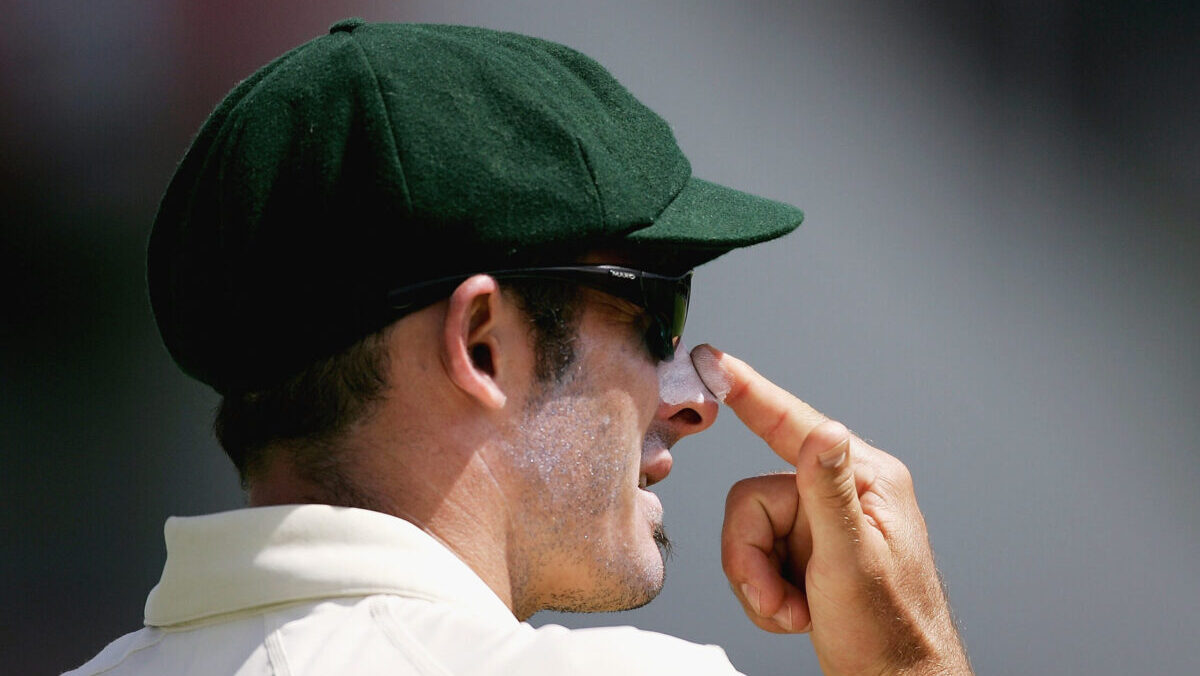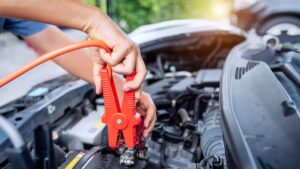Mission Critical: Australia’s biggest zinc exporter says the metal needs Canberra’s backing

Pic: Ryan Pierse/Getty Images via Getty Images
- Zinc is a key commodity in wind turbines, batteries and EVs
- Yet it remains outside the Australian critical minerals list
- Our biggest refiner wants Canberra to change that
Adorning Andrew Symonds’ pursed lips and Shane Warne’s pointed nose, zinc has a special role in the culture of Australia and its sun-kissed country.
It was part of the Broken Hill discovery which created the world’s biggest miner BHP (ASX:BHP), while Consolidated Zinc was a forerunner for the mining giant now known as Rio Tinto (ASX:RIO).
But, like other key metals for the energy transition like nickel and copper — and unlike lithium and rare earths — it remains outside the 26 minerals included by the Australian Department of Industry, Science and Resources on its Critical Minerals List.
That is despite its inclusion in the critical minerals list in the United States, which could open new zinc projects to major sources of government funding and support.
Trafigura’s Nyrstar, Australia’s largest zinc producer which produces around 50-60% of our country’s refined zinc at its Hobart smelter, has revived a lobbying campaign to get the key energy metal included on the list amid a review which is expected to better align it with the need to deliver commodities for renewables and electric vehicles.
“Zinc is among the most used metal on earth playing an indispensable role in the development and manufacture of thousands of products important to Australia, our trading region, and our strategic partners,” Nyrstar’s co-CEO Dale Webb said.
“By including zinc on its Critical Minerals list Australia will join other nations including the US, Canada and South Korea and open up opportunities to strategically cooperate in addressing mutual supply chain risks.”
Nyrstar warns we are facing a supply chain shortage of zinc globally ranging up to 1.7Mt annually by the end of the decade.
While prices briefly surged to record levels of almost US$4400/t in early 2022, they have since come back to US$2350/t today.
It has reinforced concerns that there is a market failure and without Government support new operations may not be incentivised to start up and deliver the output needed to feed the energy transition.
What role will zinc play in the energy transition?
Zinc’s primary purpose isn’t really to keep the skin of international cricketers free from sunburn on a long day in the field keeping the Ashes out of English hands.
It is a key component of solar cells, where zinc increases the efficiency of solar PV, and extends the life of solar and wind turbines by galvanising steel to protect against corrosion.
It is also emerging as an alternative battery technology to lithium ion, especially in grid storage, is used in fertiliser, lightweighting cars, especially electric vehicles and defence.
Galvanising steel made with zinc and rolled or shaped zinc metal is also essential in infrastructure and green construction, given it is 100% recyclable and increases the lifespan of buildings, reducing replacement and maintenance costs.
This makes it a major weapon in reducing the carbon emissions of intensive industries like construction.
As much as 2.5-3Mt of additional zinc will be needed by 2030 each year, equivalent to around 20% of global supply, Nyrstar says.
And since 2000 the supply chain has been increasingly dominated by China, increasing output by 4Mt between Y2K and 2021 as the rest of the world has shut or stalled its refining capacity.
But without zinc’s inclusion in the list, Nyrstar points out it will make it harder for Australia to become a producer of rare commodities that ARE ALREADY on the CML, like germanium, gallium and indium.
Used in semiconductor chips but largely produced as by-products of zinc smelting, you may be familiar with those commodities thanks to the storm around Chinese export restrictions, broadly read as a trade offensive against the West.
“Australia has an opportunity to move beyond an extract and export approach to its resources, and its Critical Minerals List presents an opportunity to strategically identify opportunities where it can play a greater role in zinc and other metals processing,” Webb said.
“To do this will require an assessment of resources that moves beyond the quality and volume of Australia’s minerals and instead takes greater account of the entire value chain.
“When thinking critical minerals, Australia needs to start thinking beyond just batteries. The clean energy transition is driving significant and rapid change in the volume of minerals and metals the world needs to support a diversity of low carbon energy solutions.
“Australia’s Critical Minerals List will benefit from a broader consideration of emerging technologies and products necessary for the growth of modern, industrialised economies, and the resources that are integral to their supply chains.”
Get Zincin’
There are a number of companies looking to increase the production of zinc on our shores through new discoveries or dusting off old developments in the context of the current geopolitical and investment environment.
Rumble Resources (ASX:RTR) shot to prominence a couple years ago with the Earaheedy zinc discovery.
In April this year it posted the maiden resource for the project, owned in a 75-25 JV with Zenith Minerals (ASX:ZNC).
The maiden resource at Earaheedy included 94Mt at 3.1% Zn and lead along with 4.1% silver for 2.2Mt of zinc, 600,000t of lead and 12.6Moz of silver, counted as one of the largest zinc sulphide discoveries made in the past decade.
Rumble is continuing to drill, saying less than 35% of its targeted 45km long shallow and flat lying mineralised unconformity unit had been tested by drilling at the time it posted its resource.
READ: Q+A: We need more zinc. Rumble Resources’ Earaheedy project could boast supergiant potential
Another prospective zinc producer is Bill Beament’s Develop Global (ASX:DVP), which is looking to develop the Sulphur Springs mine in the Pilbara, where it completed a DFS this year, and the Woodlawn project in New South Wales, where it paid just $30m for a project with hundreds of millions in infrastructure.
Sulphur Springs would produce almost 500,000t of zinc metal along with 83,000t of copper over an initial eight-year mine life.
Former gold bull Beament, whose company is also trying to tie up a deal for lithium explorer Essential Metals (ASX:ESS), has been extremely positive on the outlook for zinc from wind energy, and especially offshore turbines.
“Obviously, copper is probably an easier commodity for people to understand,” he told Stockhead back in May.
“Even though we need so many bloody wind turbines to transition the world’s energy needs, and they’re all going to be offshore or onshore. I hope they’re offshore because they use a s..tload more zinc.
“But you know, we’re going to need copper and zinc and all that sort of stuff. So, yeah, pretty excited how that’s panning out.”
Other explorers which could stand to benefit from the inclusion of zinc in the critical minerals list include Boab Metals (ASX:BML), owner of the Sorby Hills lead, zinc and silver project near Kununurra, Peel Mining (ASX:PEX), which host polymetallic prospects in New South Wales, and Polymetals Resources (ASX:POL), which is attempting to restart the Endeavour silver, zinc and lead mine in the Lachlan Fold Belt.
The big dog
When it comes to zinc on the ASX though, the big dog is South32 (ASX:S32), which produced 59,200t of the metal at its Cannington mine in Queensland, a massive deposit which counts also as one of the world’s largest producers of silver.
Its next leg of growth is the Taylor deposit in the Hermosa project in Arizona.
It’s a zinc rich base metals deposit expected to deliver 111,000t of zinc, 138,000t of lead and 7.3Moz of silver over a 22-year mine life, according to a PFS last year.
A DFS is due this year along with a final investment decision, though a US$1.3 billion impairment on the value of Hermosa has raised eyebrows in recent weeks.
After Taylor, South32 plans to develop the manganese focused Clark deposit to supply high purity manganese sulphate for NCM lithim-ion batteries.
CEO Graham Kerr, who has long been bullish on zinc’s role as an energy transition metal, said the United States is advanced compared to Australia when it comes to the recognition of metals like zinc as critical minerals.
“From an Australian perspective, I think, absolutely it is a critical mineral that should go on the list,” he said.
“What it means I guess for policy is probably too early to say. At the moment it’s far more, if you like, forward thinking on that in the US and they’re more advanced than Australia is in that space at the moment.
“You have seen the EU now to think about a critical minerals list. Their challenge I guess is lack of domestic opportunities to work their way through that as well.
“I think globally it will be a push that goes on. We’re obviously a large producer of zinc that comes out of our Cannington mine that has been running for 26 years there with a very good strong and loyal customer base.”
One advantage of zinc and manganese’s inclusion on the list in the US is Hermosa’s inclusion in the Fast-41 Process, the first mining project to achieve that status.
“Clearly for us zinc and manganese to go in batteries has been added to the critical mineral list in the US (they were) two of the five and they are looking obviously at expanding that at the moment as well,” Kerr said.
“The advantage for us in the US was it allows us to be the first mining company to actually enter what’s called the Fast 41 Process, which allows us to not shorten and not sort of circumvent but it does allow the Federal Government to focus on all the resource it needs to make sure that project can progress, and it potentially opens up funding opportunities around Clark particularly with manganese as we go forward.
“To your question around zinc, we think zinc is going to be absolutely a commodity that’s in demand, particularly around wind turbines and if you think about wind turbines offshore, they’ll strongly be sought after from a zinc perspective.”
Aussie Zinc Co. share prices today
Related Topics
UNLOCK INSIGHTS
Discover the untold stories of emerging ASX stocks.
Daily news and expert analysis, it's free to subscribe.
By proceeding, you confirm you understand that we handle personal information in accordance with our Privacy Policy.








